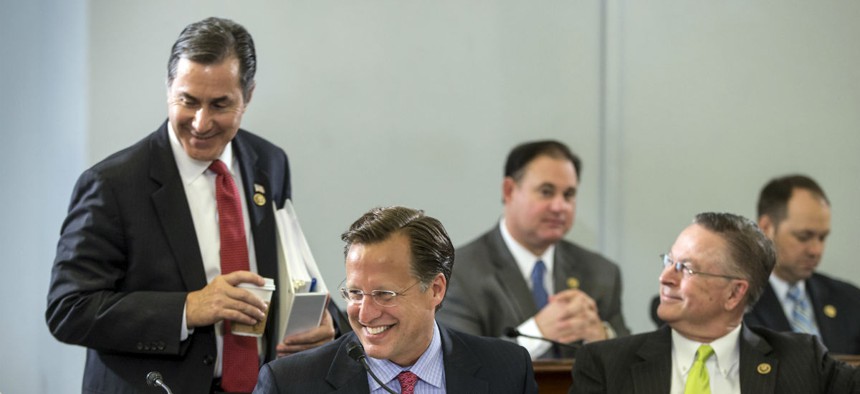Why the GOP Plan for $300B in Federal Pay, Workforce Cuts Doesn't Add Up
Lawmakers are playing a dangerous game in promising things they can’t deliver.
The old chestnut of slashing the federal workforce through attrition is back again. For those who believe government is too big and want to shrink the workforce, the idea is attractive: Baby Boomers are leaving the federal workforce. Republicans want to save money. What could be an easier than filling just two out of three positions opened up by retirements?
But the math doesn’t add up. Here’s why.
The Office of Personnel Management counts 1.8 million permanent, non-seasonal, full-time employees. Cutting the workforce by one-third would mean pruning 600,000 workers.
Then let’s assume that there are some programs the Republicans won’t want to cut. There’s Social Security (no one wants to make it harder to make payments to retirees). There’s border protection and immigration (with another 78,000 employees). In fact, pursuing the candidates’ promises to build walls and track down immigrants will take even more workers. The candidates support care for veterans. The VA is the federal government’s largest civilian department in terms of the number of employees, at 308,000 workers, and we don’t want to make a troubled department even worse.
It seems unlikely that we’d want to put the air traffic system at risk or increase travel delays, either by cutting the number of aviation screeners working for the Transportation Security Administration (nearly 52,000 employees) or the Federal Aviation Administration’s air traffic control system (with nearly 44,000 workers). And no one has proposed cutting the Coast Guard, with more than 7,000 civilian employees.
No one likes the IRS, with its 81,000 employees. But until Congress passes tax reform, it’s hard to imagine anyone would support making it even harder for taxpayers to get the help they need to file their forms—or to cut back on catching those trying to cheat. It’s tough to slash the IRS even more, until we get a post-card-sized tax form.
Add up the can’t-cut agencies, and we get 633,000 employees. Then let’s assume that the Republicans don’t want to cut back on defense. The only difference among the Republican presidential contenders is how much they want to increase defense spending, and they’ll need employees to write and manage the contracts to spend the money. That takes 670,000 more positions off the table.
A quick check of the calculator shows that amounts to 1.3 million employees that are out of reach of reduction-through-attrition. That leaves 523,000 federal employees. So, to meet the Republicans’ target of slashing the workforce by a third, every other federal employee would have to be eliminated: no FBI to chase bad guys, no Secret Service to protect the president, no FDA to oversee drug safety and no safety inspectors to check the food supply. No one would take care of the national parks or investigate Flint’s water problems. We’d have no prosecutors for the federal courts or guards for federal prisons. And even then, we’d be 80,000 employees short of the Republicans’ target, so we’d have to dip deeply into the can’t-cut agencies.
It’s dangerous to promise what can’t be done. That only aggravates citizens who already are convinced politicians won’t keep their word.
It’s equally dangerous to use federal employees as punching bags for the fierce anti-government feeling out there. This isn’t to make a circle-the-wagons case around feds. We could surely downsize the workforce, if we did it in a careful and focused way, based on figuring out how best to do the jobs we want to accomplish.
But this is a case where it makes sense to run government more like the private sector: figure out what we want to do, then determine how best to do it—and recognize that employees are the best asset we have in doing what citizens expect their government to do. Otherwise the anti-government fervor will surely get even worse.
We truly need to reform the way the federal government works. We can even figure out how to cut it. But the plan to replace only two of every three retirees just doesn’t add up.
NEXT STORY: Why Cruz Would Be Better for the GOP








